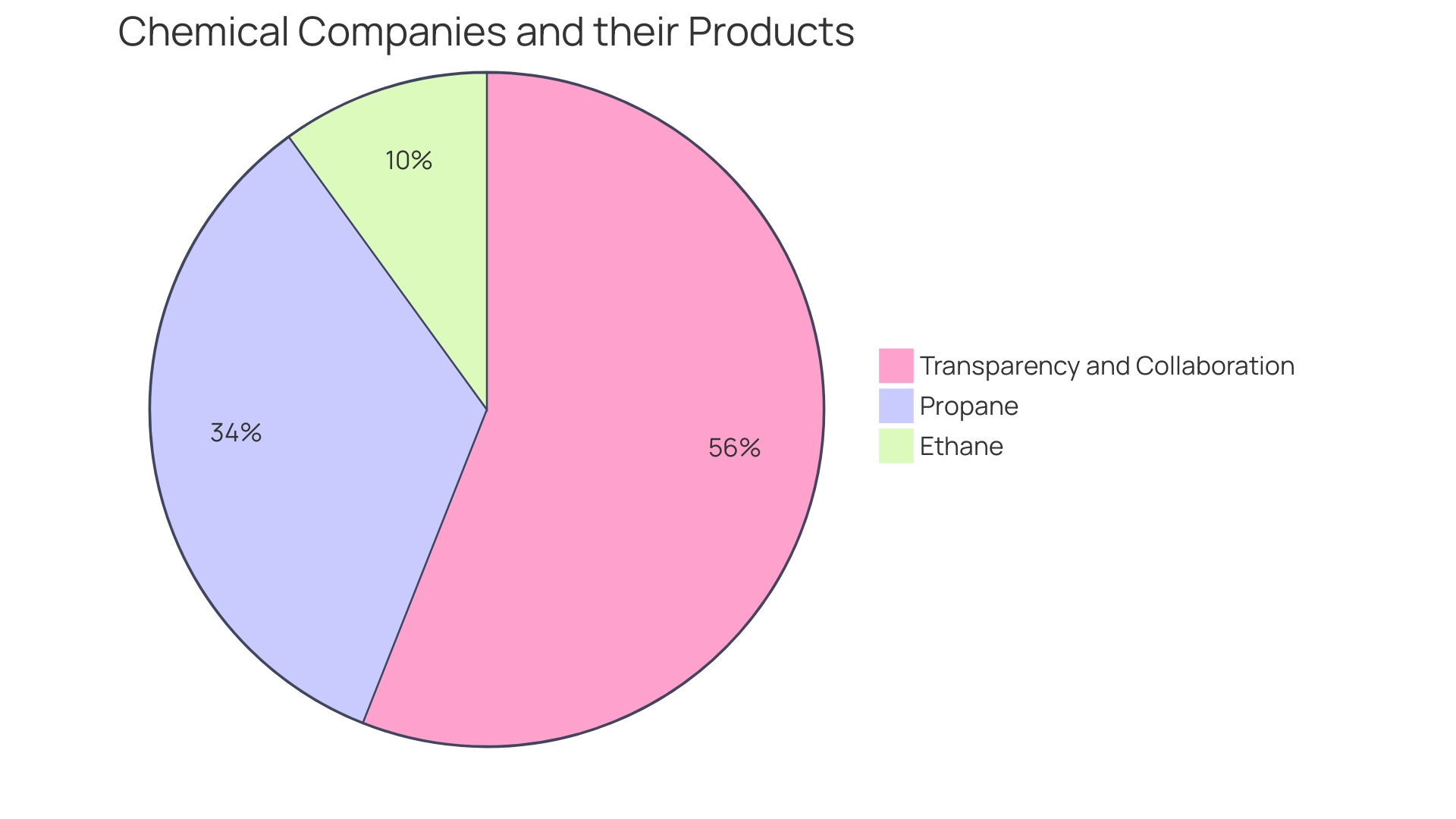Introduction
Naphtha, a versatile byproduct of crude oil refinement, plays a crucial role in various sectors, including petrochemicals, manufacturing, and energy. With its value lying in its ability to serve as both a fuel and solvent, naphtha has become an integral component in the renewable fuels industry. Recent advancements and breakthroughs in the field, such as Coolbrook's rotating technology and catalyst innovations, highlight the industry's commitment to reducing greenhouse gas emissions and improving efficiency.
Additionally, the adoption of cleaner production processes and the utilization of renewable resources further emphasize the industry's shift towards sustainability. However, naphtha's distinct properties, when compared to gasoline, present challenges in terms of engine performance and combustion characteristics. Despite these challenges, the industry continues to explore advanced combustion strategies and alternative technologies to enhance naphtha's compatibility with internal combustion engines.
The article delves into the properties, production, applications, and environmental impact of naphtha, providing technical insights and analysis for readers with a deep understanding of the renewable fuels industry.
Definition and Production of Naphtha
Naphtha, a flammable hydrocarbon mixture, is a byproduct of crude oil refinement, serving as an essential component in various sectors, notably petrochemicals, manufacturing, and energy. Derived from crude oil, naphtha's worth lies in its versatility as both an energy source and solvent. Innovations in the field have led to more environmentally conscious practices, as seen in the reduction of nitrous oxide emissions from nitric acid production, a testament to the industry's adaptability and commitment to sustainability. Researchers, like Ibrahim A. Abba and his team, are exploring diverse strategies to convert crude oil to chemicals, offering prospects for enhancing efficiency and reducing environmental impact. Global collaborations, such as those pursued by Abba's team, are instrumental in this endeavor, promising accelerated development and integrated technology solutions.
Recent breakthroughs highlight the dynamic nature of naphtha-related technologies. For example, Coolbrook's award-winning rotating technology has the potential to significantly cut CO2 emissions in heavy industries by replacing the burning of fossil fuels. Meanwhile, advancements in catalyst technology, like the use of zirconium with silicon nitride, demonstrate the possibility of more efficient and less energy-intensive conversions, such as turning propane gas into propylene. These innovations are pivotal in addressing the challenge of greenhouse gas emissions.
Furthermore, the adoption of cleaner production processes, utilizing non-food woody biomass, exemplifies the shift towards leveraging renewable resources and minimizing carbon footprint. This approach not only helps in curbing CO2 emissions but also results in high-purity byproducts, enhancing the overall value chain. Such initiatives are integral in steering the industry towards a more sustainable trajectory, balancing the exploitation of natural resources with environmental conservation.

Properties of Naphtha vs Gasoline
Naphtha, when evaluated alongside fuel, presents a distinct profile in terms of chemical properties and performance in combustion engines. Characterized by a lower octane rating, this fuel is more prone to pre-ignition or 'knocking', which can affect engine performance and efficiency. Furthermore, its higher volatility can influence its storage and handling requirements. In terms of energy density, naphtha contains less energy per unit volume than a type of fuel called gasoline, which can impact the output and fuel economy of engines utilizing it as a source of energy. It is these essential characteristics that determine the uses and practical factors for a certain type of fuel when compared to other similar fuels.

Ignition Characteristics: Naphtha vs Gasoline
Naphtha's chemical structure lends it a lower flash point than gasoline, making it a highly volatile substance that ignites more readily. This trait of naphtha, coupled with its high energy density and compact storage capabilities, is particularly advantageous for applications requiring immediate and controlled combustion, such as liquid-fueled detonation propulsion systems, which have seen a resurgence of interest and development. Scientists such as Kailasanath and Fan have performed substantial experiments concentrating on these systems, highlighting the viability of liquid substances instead of gaseous options. In contrast, UC Riverside chemical engineers have innovated a 'safe' liquid energy source that requires an electric current to ignite, avoiding accidental fires, highlighting the diverse ignition characteristics of liquid energy sources. Meanwhile, significant populations, particularly in low-income areas, depend on biomass for cooking and heating; however, interventions like the HAPIN trial are examining the health consequences of utilizing cleaner energy alternatives such as unvented LPG stoves. Such studies underscore the importance of understanding the ignition properties of various fuels to enhance safety and health outcomes.

Refining Costs and Environmental Impact
Naphtha, often an intermediary in the refining process, and a final product, have distinct production pathways that impact their respective costs and environmental footprints. Transforming a certain type of petroleum into gasoline incurs additional steps, which can elevate production expenses. Both combustibles, upon burning, emit greenhouse gases, yet the combustion of a certain substance may result in higher levels of particular contaminants. As the global energy landscape develops, with movements towards carbon-neutral refineries and the reduction of fossil resources in petrochemical production, the industry faces challenges and opportunities. Ethylene, a petrochemical derived from naphtha and used in a myriad of products, is undergoing a transformation to reduce its carbon footprint. Innovations like those from CERT Systems Inc. aim to produce ethylene without depending on fossil fuels. Market dynamics also play a crucial role, with diesel historically trading at a premium, influenced by factors such as the implementation of ultra-low-sulfur diesel and fluctuating demand patterns. Accurate energy and commodity market assessments, like those from Argus, are invaluable for providing transparency and aiding strategic planning in this complex sector.

Applications in Internal Combustion Engines
Naphtha and gasoline both serve as energy sources for internal combustion engines, but they exhibit distinct chemical properties and suitability for engine types. Gasoline, with its higher octane rating, is the preferred choice for spark-ignition engines, providing the necessary anti-knock characteristics without the need for additives. Naphtha, on the other hand, has a lower octane rating, which can lead to engine knocking. To combat this, naphtha can be used in engines designed for its lower octane or blended with other hydrocarbons to enhance its performance.
Creative applications of alternative energy sources showcase the flexibility of internal combustion engines, especially older diesel models recognized for their adaptability and dependability. Engines from manufacturers like Mercedes and Volkswagen have been modified to operate on unconventional substances such as used vegetable oil or, as in the case of a modified diesel Volvo 240 wagon, plastic waste. This underscores the potential for naphtha as a versatile energy source when considering modifications for alternative fuel sources.
The octane rating of a substance is a measure of its ability to withstand compression without detonating; petrol typically features a high octane rating in the 90s, while diesel sits close to zero, and tractor vaporizing oil (TVO) hovers in the 50s. This range signifies the diversity of energy formulations and their tailored applications for various engine types. Naphtha's lower octane rating positions it between gasoline and diesel, indicating its potential utilization in engines specifically engineered for its characteristics or as a constituent in blended energy sources.
With the changing power landscape and the drive for decarbonization, the advancement of e-fuels and hydrogen as carriers is gaining momentum. These developments create a setting for contemplating other energy sources, such as petroleum distillates, in the wider framework of environmentally friendly and renewable energy sources, which demonstrates the continuous shift in the energy and automotive sectors.
Advanced Combustion Strategies with Naphtha
Utilizing advanced combustion techniques is crucial in improving the compatibility of this fuel with internal combustion engines, especially considering its lower octane rating. By utilizing high compression ratio engines and embracing direct injection technologies, the efficiency of a specific type of petroleum distillate as an energy source can be greatly enhanced. These methodologies align with the multifaceted research initiatives undertaken by scientists and engineers, such as those led by principal scientist Ibrahim A. Abba, who underscore the importance of diversifying technology options to cover various crude types and product slates. The innovation in engines resonates with the broader industrial movement towards sustainable practices, as seen in Coolbrook's award-winning technology aiming to decarbonize heavy industry and Maersk's pioneering methanol-powered ships. The adoption of such technologies also echoes the global shift towards alternative fuels, including the European Union's procedural steps toward e-fuel utilization and the development of hydrogen as a power source, challenging the conventional reliance on diesel and paving the way for a greener future in the transport sector.
Emissions and Efficiency Comparison
The emissions and performance characteristics of naphtha in comparison to another fuel reveal a complex interplay between environmental impact and energy efficiency. Naphtha's combustion process tends to release higher quantities of nitrogen oxides (NOx) and particulate matter, which are pollutants with significant health and environmental ramifications. In contrast, the combustion of gasoline may result in lower emissions of these specific pollutants but has a greater tendency to produce carbon dioxide (CO2), a greenhouse gas with a well-documented role in global warming. The effectiveness of these energy sources is not a constant characteristic but rather relies on the engine technology and the approaches used for combustion.
Recent research from Oxford University and the Regulatory Assistance Project, as mentioned in the Journal Joule, has indicated that alternative technologies such as heat pumps can offer more than double the efficiency of traditional oil and gas heating systems, even in extreme cold temperatures. This highlights the potential for innovative energy solutions to outperform conventional fossil fuel-based systems.
Furthermore, the shipping industry is also moving toward more sustainable solutions, with the advent of the world's first container ship powered by methanol, the Laura Maersk. Maersk's goal to achieve net-zero greenhouse gas emissions by 2040 underscores the sector's commitment to reducing its carbon footprint. Methanol, acknowledged for its capability to break down in the environment, provides a cleaner alternative that can be utilized in applications traditionally dominated by substances like naphtha and gasoline.
In view of these advancements, it's vital to contemplate the wider consequences of energy selections on the environment. As the sector of power transforms, the influence of various sources on the nitrogen cycle, especially in the shift to an ammonia-centered economy, is starting to be investigated, with the possibility of substantial economic, societal, and environmental consequences.
All of these insights into the efficiency and emissions of naphtha and gasoline, as well as the exploration of alternative energy carriers, contribute to a nuanced understanding of how best to balance energy needs with environmental stewardship. According to Our World in Data, thorough processing of data, which includes standardizing metrics and calculating indicators, is crucial to precisely evaluate and compare the effects of different energy sources and technologies.

Potential Benefits and Challenges of Using Naphtha
Naphtha's role as a fuel presents a compelling juxtaposition of advantages and technical hurdles. As a solvent and petrochemical feedstock, the utility of this substance extends beyond its function as a gasoline substitute. It is a vital component in a myriad of applications, including the production of high-demand ethylene for use in plastics, textiles, and packaging, underpinning its ubiquitous presence in industrial processes.
The flexibility of a certain substance is further improved by its potential to be synthesized from sustainable sources. This aligns with the global push towards sustainable energy solutions, as highlighted by experts like Rice, with over 40 years in renewable energy development, and the innovative efforts in energy conservation by Alyssa, who brings a decade's worth of experience to the field.
However, the usage of the substance is not without its complexities. Its lower octane rating, compared to gasoline, necessitates the use of additives or advanced engine technologies to optimize performance. Additionally, the burning of a certain type of fuel can result in increased releases of particular contaminants, a worry expressed by experts in the field dedicated to minimizing ecological impacts.
Addressing these challenges requires a multifaceted approach. Combining a specific type of fuel with additives can reduce the effect of its lower octane rating, while advancements in combustion techniques provide ways to decrease emissions. These solutions resonate with the overarching themes of efficiency and environmental responsibility that are central to the discipline of chemical engineering, as emphasized by the viewpoints shared in the inaugural issue of Nature Chemical Engineering.
In essence, naphtha's application in the fuel industry embodies the dual nature of chemical engineering—leveraging scientific innovation to meet today's energy demands while conscientiously navigating the environmental challenges posed by its use.
Conclusion
Naphtha plays a crucial role in the renewable fuels industry, but its distinct properties compared to gasoline present challenges in engine performance and combustion. The industry is actively exploring advanced combustion strategies and alternative technologies to enhance naphtha's compatibility with internal combustion engines. Innovations in refining processes and accurate energy market assessments are vital for reducing costs and environmental impact.
Naphtha and gasoline have different chemical properties and suitability for engine types. Gasoline is preferred for spark-ignition engines, while naphtha requires modifications or blending for optimal performance. The development of e-fuels and hydrogen as energy carriers opens up possibilities for naphtha within the broader context of sustainable and renewable energy sources.
Leveraging advanced combustion strategies, like high compression ratio engines and direct injection technologies, is crucial for improving naphtha's efficiency as a fuel. These strategies align with the industry's movement towards sustainability and alternative fuels, paving the way for a greener future in the transport sector.
The emissions and efficiency characteristics of naphtha compared to gasoline reveal a complex interplay between environmental impact and energy efficiency. Addressing these challenges requires a multifaceted approach that combines blending solutions and advancements in combustion strategies.
In conclusion, the renewable fuels industry continues to enhance naphtha's compatibility with internal combustion engines through innovation and sustainability. By embracing advanced combustion strategies, alternative technologies, and a commitment to reducing environmental impact, the industry is driving towards a greener future in the renewable fuels industry.




